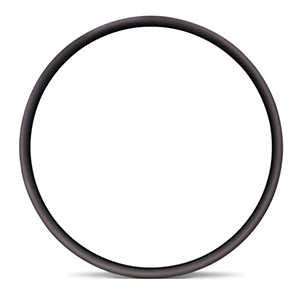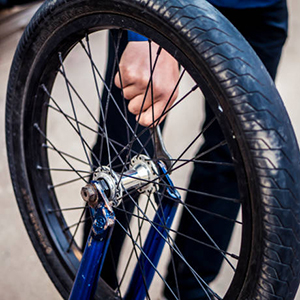
Carbon BMX Rims for Racing: Lightweight and Strong Options
If you’re involved in BMX racing, you know that every component matters. The wheels you choose can affect speed, handling, and overall performance in ways you might not notice until it’s too late. Carbon BMX rims have become a top choice for riders and businesses alike because they offer a unique combination of lightweight and strength.
These rims are suitable not only for professional racers but also for assembly factories, design studios, and bike shops that want to provide high-quality BMX products. Selecting the right carbon rims can enhance rider control, reduce fatigue, and improve overall bike performance.
In this article, you’ll learn what makes BMX race carbon rims different, why they are essential for racing, and how to select the right ones for your business. By understanding these factors, you can make better decisions and stay ahead in the competitive BMX market.

What Are Carbon Fiber BMX Rims
When you hear the term carbon BMX rims, it simply refers to bicycle rims made from carbon fiber composites rather than traditional materials like aluminum. Carbon fiber is created by layering extremely thin strands of carbon in a resin matrix, producing a rim that is both lightweight and remarkably strong.
Why Carbon Matters in BMX
In BMX racing, weight plays a huge role. A lighter rim makes it easier to accelerate out of the gate and maintain speed during sprints. At the same time, stiffness ensures that the rim doesn’t flex too much under pressure, giving you better power transfer and control on the track.
How They Differ From Alloy Rims
Unlike alloy rims, carbon fiber BMX rims are:
Lighter–reducing rider fatigue during long sessions.
Stiffer–giving you a sharper response in tight corners.
Durable–designed to handle high impacts without bending.
Designed for BMX Performance
Carbon rims are not just for looks. They’re engineered with racing in mind, balancing speed, strength, and precision handling. For businesses, offering carbon rims BMX means providing riders with the technology that professionals rely on to gain a competitive edge.
Why Carbon BMX Rims Are Essential for Racing
When it comes to BMX racing, small changes in equipment can make a big difference in results. The choice of rims directly impacts how fast you accelerate, how well you handle turns, and how efficiently you transfer power from pedals to ground.

Key Features That Make BMX Race Carbon Rims Stand Out
Not all rims are built the same. When you look closer at carbon BMX race rims, you’ll see specific features that separate them from other options on the market. These design details are what make them the go-to choice for racing.
Lightweight Design
The first thing you’ll notice is the weight. Carbon rims use advanced layering techniques that keep them extremely light while still maintaining strength. This helps you launch faster and ride longer without feeling drained.
High Stiffness and Responsiveness
Stiffness is critical in BMX. A rim that doesn’t flex much gives you direct power transfer. This means:
Faster sprints off the line.
Precise control in sharp corners.
Confidence when landing jumps.
Aerodynamic Profile
Some carbon rims are shaped to reduce drag. Even small aerodynamic gains can add up in a race, helping you cut through air more efficiently and save precious seconds.
Impact Resistance
Unlike alloy rims that may bend, carbon rims are engineered to absorb repeated impacts. This durability keeps them performing well even under the intense conditions of racing.
For riders and suppliers, these features mean more than just performance—they represent value, reliability, and long-term trust in the product.
Carbon vs Aluminum BMX Rims
When you’re choosing rims for BMX racing or freestyle, the main comparison comes down to carbon and aluminum. Both have their advantages, but they perform differently in terms of weight, stiffness, cost, and durability.
|
Feature |
Carbon BMX Rims |
Aluminum BMX Rims |
|
Weight |
Extremely lightweight, ideal for quick acceleration and reduced rider fatigue |
Heavier, which can slow down acceleration but may add stability |
|
Stiffness |
High stiffness provides sharp power transfer and precise handling |
More flexible, which can feel less responsive during sprints and jumps |
|
Durability |
Resistant to bending and long-term wear; designed to absorb repeated impacts |
Can bend or dent under heavy stress, though often easier to repair |
|
Performance |
Optimized for racing, better aerodynamics, control, and efficiency |
Reliable for training or casual riding but less efficient in competitive use |
|
Cost |
Higher investment but offers long-term value and performance benefits |
Lower cost, accessible for beginners or budget-conscious riders |
|
Target Use |
Best for competitive BMX racing and professional-level setups |
Suited for entry-level riders, training, or freestyle with less performance need |
Applications Across BMX Racing and Freestyle
Carbon rims BMX are not limited to one style of riding. Whether you’re on the race track or practicing freestyle tricks, their design can give you clear advantages in different scenarios.

How to Choose the Right Carbon BMX Rim for Your Business
If you’re sourcing BMX carbon rims for your store, assembly line, or design project, making the right choice is crucial. The right rim doesn’t just improve rider performance—it also strengthens your brand’s reputation in the market.
Consider the Riding Style
Not every rider needs the same rim.
Racing rims focus on weight savings and stiffness for speed.
Freestyle rims prioritize durability to handle repeated impacts.
All-round rims balance for shops serving mixed customers.
Knowing your target buyers helps you stock rims that truly meet their needs.
Pay Attention to Rim Specs
BMX race carbon rims vary in depth, width, and weight. For example:
Deeper rims provide more aerodynamics, great for racing.
Wider rims support stability and grip, ideal for freestyle.
Ultralight designs are best for pro-level riders chasing performance gains.
Evaluate Supplier Reliability
When dealing with carbon products, consistency matters. Look for:
Proven manufacturing processes.
Quality testing for strength and impact resistance.
Flexibility for OEM or custom branding if you’re building your own line.
Balance Performance and Cost
It’s tempting to focus only on price, but remember that long-term durability reduces replacement costs and keeps customers satisfied. A well-chosen carbon rim adds value not only to the rider but also to your business strategy.
Carbon Rims BMX Maintenance and Longevity Tips
Owning carbon BMX rims comes with responsibilities. While they’re strong and lightweight, proper care helps you get the most value and keeps them performing at their best.

Future Trends in Carbon BMX Rims
The world of BMX racing continues to evolve, and carbon rims are at the center of many innovations. Manufacturers are experimenting with new fiber layouts and resins to create even lighter rims without sacrificing strength.
Another trend is customization. More riders and brands want rims with unique shapes, finishes, or graphics that stand out while still delivering top performance.
Sustainability is also on the horizon. Some companies are exploring eco-friendly production methods and recycling processes for carbon components.
For your business, staying updated with these trends helps you meet future rider demands.
Best BMX Carbon Rims Buying Guide
Finding the right carbon BMX rims doesn’t have to be complicated. A clear checklist helps you make smarter choices for your needs or your business.
Key Factors to Consider
Riding style–Racing requires ultralight rims, while freestyle calls for stronger, wider options.
Rim depth and width–Deeper rims boost aerodynamics; wider rims give more stability.
Weight limits–Choose rims that match the rider’s build for both safety and performance.
Supplier quality–Work with reliable manufacturers who test their rims for impact resistance.
Final Tip
Always balance performance, durability, and cost. A well-chosen carbon rim becomes a long-term asset rather than a short-term upgrade.
Conclusion
Choosing the right BMX carbon rims can make a noticeable difference in performance and rider experience. They combine lightweight design with strength, helping racers and freestyle riders maintain control and speed.
For your business, offering high-quality carbon rims means providing products that meet professional standards and satisfy customer expectations.
When making a decision, focus on riding style, rim specifications, and supplier reliability. Proper maintenance and attention to quality ensure long-term value for both riders and your business.
By understanding these key points, you can confidently select the best BMX carbon rims that deliver performance, durability, and satisfaction.
Frequently Asked Questions About BMX Carbon Rims
Q: What size riders use 20 inch carbon BMX rims?
A: 20 inch carbon BMX rims are ideal for younger riders or those competing in standard BMX race categories. They provide a good balance of control, speed, and agility, making them a popular choice for both beginners and competitive racers.
Q: How do 24 carbon BMX rims differ from 20-inch models?
A: 24 carbon BMX rims are larger in diameter, offering more stability and momentum. They are suitable for taller riders or those who prefer a smoother ride on longer tracks. These rims are often used in freestyle or park riding, where added control is important.
Q: What are the 44 BMX carbon rims best used for?
A: 44 BMX carbon rims are deeper and stiffer, designed for high-performance racing. They provide excellent power transfer and durability, which is perfect for serious competitors seeking consistent results.
Q: How do I maintain carbon BMX rims for long-term use?
A: Regularly check for cracks or chips, clean rims after rides, and maintain proper tire pressure. Proper storage away from extreme heat or moisture also helps extend the lifespan of carbon rims.
Q: Are carbon BMX rims compatible with most BMX bikes?
A: Yes, most carbon BMX rims fit standard hubs and tires. However, always verify size and specifications to ensure proper installation and optimal performance.
Previous :
Best 700c Carbon Road Rims: A Complete Buyer's GuideNext :
Hooked vs Hookless RimsCategories
New Blog
Copyright © 2025 Top-Fire Carbon Technology Co., Ltd. All Rights Reserved. Power by

IPv6 network supported